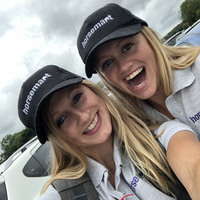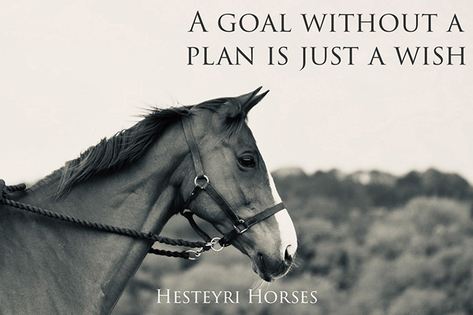We are midway through January and you may be thinking something along the lines of: ‘I’ve already set my goals for this year’. Most people are quite good at setting themselves resolutions at the beginning of the year, but the question we are asking is how effective is your goal-setting?
As we said, goal setting is intuitive for most people, but it is important to set the right types of goals at the right time. At their best, goals can help provide direction, help us stay motivated and allow us to accomplish amazing things.
There are three types of goal. Outcome goals are based on the result of an event and therefore rely on the performance of others, an example in the equestrian world might be: winning a show jumping competition. Performance goals are objectives comparing to your own previous performances, so might be: wanting to get a clear round. Process goals are actions individuals must achieve during their performance, so could be: keeping your heels down around the course.
We should set all the types of goals but outcome goals should be for short-term motivation, such as: ‘I could have done better at that competition, next time I will’, and not before or during a competition as this could lead to added stress. Process goals are particularly helpful when trying to avoid performance related anxiety; both performance and process goals can be adjusted precisely and do not depend on an opponent.
Research shows that those high in goal setting ability feel less anxiety, higher confidence and have improved performance. There is a disadvantage if the goals are set too high and lead to consistent failure.

So, how do we set successful goals? You may have heard of the acronym SMART before: SPECIFIC, MEASURABLE, ACTION-ORIENTATED, REALISTIC and TIMELY. Let’s have a think about what that means.
Say our goal is to ‘complete a BE90’. That’s a fab goal, you have a fixed idea of where you want to be. It is quite specific and measurable, it is easy to realise when this level has been obtained. However, how are you going to action this? Are you and your horse ready for this level and it’s just a case of getting booked in and going? Or is it going to take preparation and what preparation are you going to do, will this involve some process goals? Is it realistic; is your horse jumping at 80/90 level or are they still jumping 60/70 level in which case jumping a BE90 becomes a longer-term goal? Which leads to the last question, time: when do you want to achieve this?
We are all riding at different levels and our horses are all from different walks of life. Social media can be great but it can encourage a high level of competition and this can be really hard on everyone. Thinking about your own goals and whether you have completed them is a great way to combat feeling inferior. After all, the people you feel competitive towards may have life a bit easier or have a better horse than you, but do they have SMARTer goals?
Lauren White, BSc Psychology
Hesteyri Horses







